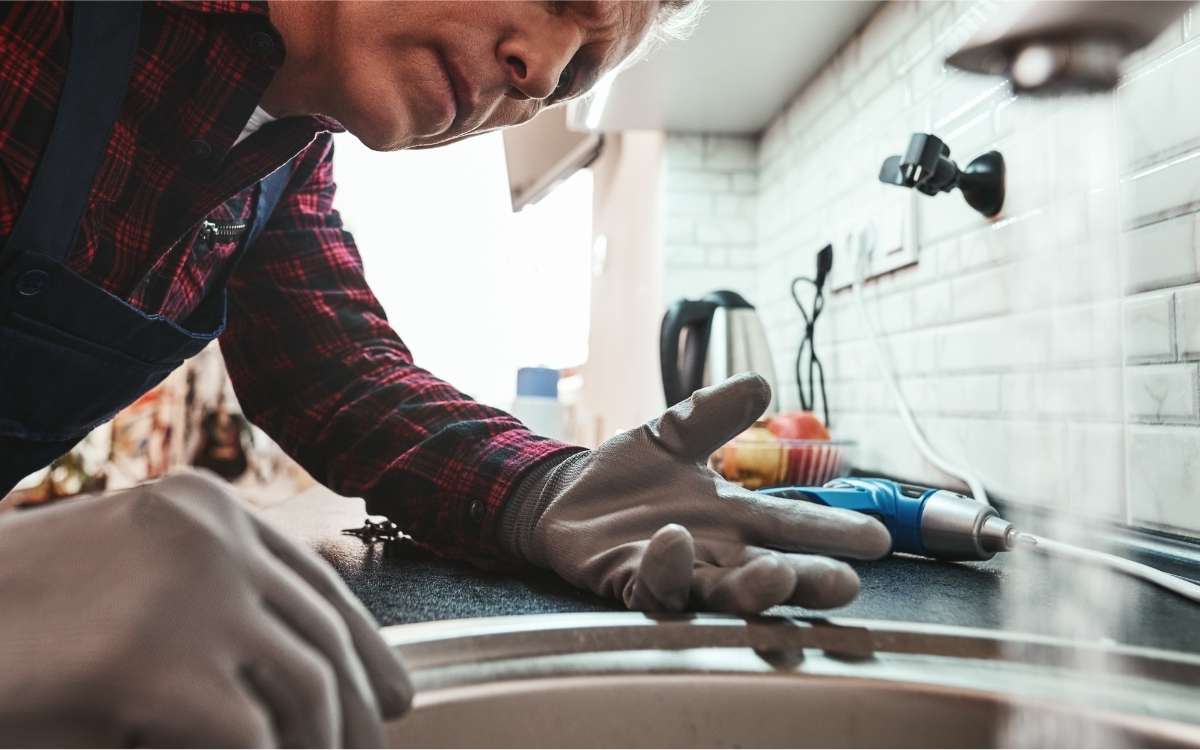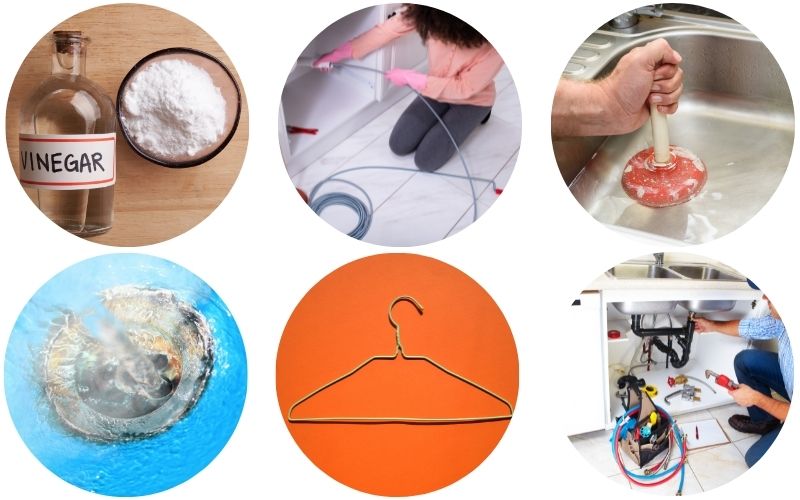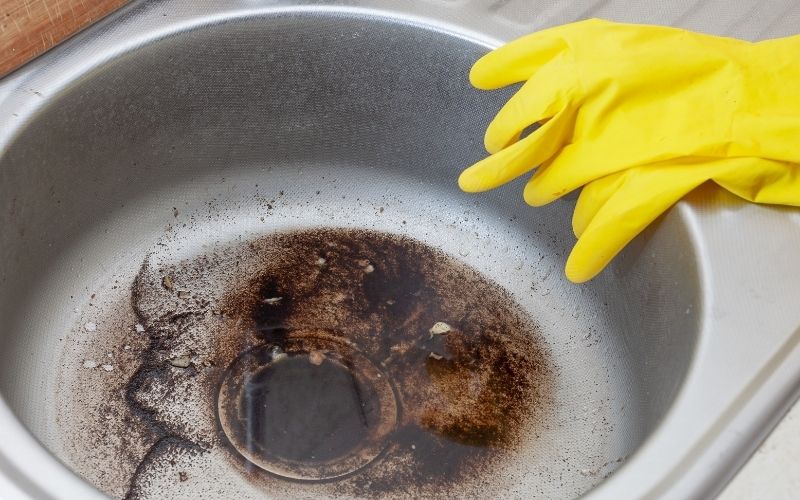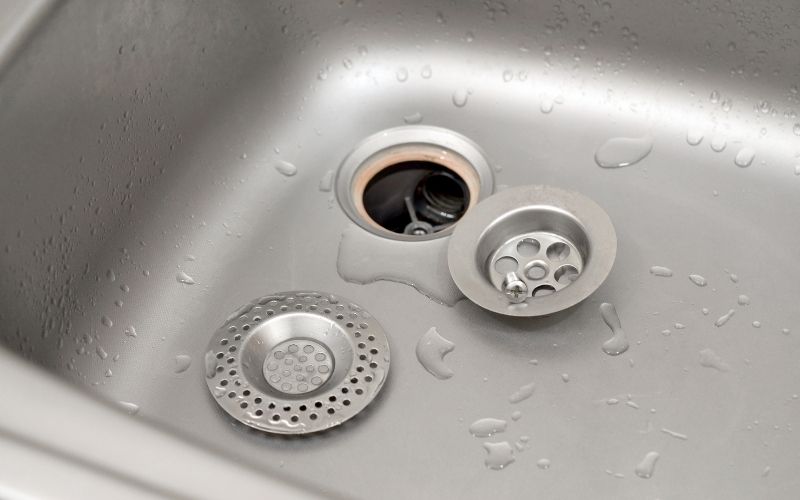If your Drano doesn’t seem to be working, it might be time to try a different approach. In this blog post, we will discuss some of the things that you can do if Drano doesn’t work for you.
We will also provide some tips on how to avoid clogs in the future. Read on to learn more!

What to Do if Drano Doesn’t Work?
Table of Contents
It can be alarming if your Drano isn’t working as well as it should. After all, you rely on this product to keep your drains clear and free of clogs.
If Drano isn’t working for you, don’t despair! There are a few things that you can do to try and fix the problem.
- First, check the expiration date on your Drano bottle. If it is expired, it might not be as effective as it once was.
- Second, make sure that you are using the product correctly. If you are not following the directions on the bottle. Drano might not work as well as it should.
- Finally, if you have tried all of these things and Drano still isn’t working, it might be time to try a different product.
There are many different drain cleaners on the market, so you should have no trouble finding one that works for you.
Just be sure to follow the directions on the bottle and use caution when handling any chemicals. It’s especially important to
If you have any questions or concerns, feel free to reach out to a manufacturer to get more information.
Best Drano Alternatives

There are other options available if Drano isn’t working for you. Here are some great Drano alternatives that you can try:
1. Use Baking Soda and Vinegar
This is a classic home remedy for clogged drains. Just pour a cup of baking soda down the drain, followed by a cup of vinegar.
Cover the drain with a plunger and let the mixture sit for 15 minutes. Then, flush the drain with hot water to clear the clog.
This homemade drain cleaner works by breaking down the clog with baking soda and vinegar. When the two substances come together, they create a foaming reaction that can help to break up the clog.
The plunger helps to maintain pressure and keep the mixture in contact with the clog.
2. Use A Drain Snake

A drain snake is a long, flexible piece of metal or plastic that can be used to remove clogs from drains.
To use a drain snake:
- Insert the tip of the snake into the drain and twist it around until you feel resistance. This resistance is likely the clog.
- Continue twisting the snake until you have dislodged the clog and then pull it out of the drain.
Drain snakes are a great way to remove clogs without the use of harsh chemicals. They are also relatively inexpensive and can be found at most hardware stores.
It’s a good idea to keep a plumbing snake on hand under your sink just in case you ever need it.
3. Use A Plunger
If you have a toilet plunger, you can try using it to clear the clog. Just make sure that you cover the entire drain with the plunger so that it forms a tight seal.
Then, pump the plunger up and down vigorously until the clog is cleared.
This is best for larger areas such as shower drain clogs. It may take a few tries, but a plunger can be a very effective tool for clearing shower clogs.
4. Pour Boiling Water Down the Drain
Sometimes a stubborn clog can be removed with nothing more than a pot of boiling water. Just pour a pot of boiling water down the clogged drain and let it sit for a few minutes.
Then, run additional hot water down the drain to flush away the clog.
This method works best if the clog is close to the surface of the drain. The boiling water will help to break up the clogged drain so that it can be flushed away or pulled out, depending on where it travels.
5. Use a Coat Hanger
Sometimes we don’t have much on hand. If you don’t have a plunger, a pipe snake, or any other traditional drain cleaning tool, you can try using a coat hanger to remove the clog.
- First, straighten out the wire hanger so that you have one long piece of metal.
- Then, create a small hook at one end of the hanger.
- Insert the hooked end into the drain and twist it around until you feel resistance. This resistance is likely the clog.
- Continue twisting the hanger until you have dislodged the clog and then pull it out of the drain.
This method will take a little longer than some of the others, but it can be very effective if you don’t have any other tools on hand.
6. Call a Professional Plumber
If you’ve tried all of the above methods and nothing has worked, it’s time to call a professional plumber. A plumber will be able to quickly diagnose the problem and clear the clog using specialized tools.
While this may be the most expensive option, it’s often worth it to have a professional take care of the problem.
Many homeowners feel that this investment is saving money over time.
Why Is My Sink Still Clogged After Drano?

Drano is a powerful chemical that can clear most clogs. However, there are some instances where Drano may not be effective.
If your sink is still clogged after using Drano, it’s likely because the clog is:
- Too far down the drain: Drano works best when the clog is close to the surface. If the clog is further down, it may not be reached by the chemicals.
- Too large of a clog: Drano can clear small clogs, but it’s not designed to clear large clogs. If your sink is still clogged after using Drano, it’s likely because the clog is too large for the chemicals to break up.
- Standing water: Drano is most effective when there is some water flowing through the drain. If your sink is full of standing water, it may not be able to reach the clog.
- A grease clog: Drano can break up small grease clogs, but it’s not designed to clear large grease clogs. If your sink is still clogged after using Drano, it’s likely because the clog is a grease clog.
If you think any of these may be the reason your sink is still clogged after using Drano, you should try one of the other methods listed above, such as a plumbing snake. If none of these methods work, it’s time to call a professional plumber.
Can You Use Drano Twice?
Drano contains powerful chemicals that can be dangerous if used improperly. For this reason, it’s not recommended to use Drano more than once.
If your sink is still clogged after using Drano, try one of the other methods listed above before using Drano again.
Using Drano more than once can cause the chemicals to build up in your pipes and create a dangerous situation. If you use Drano more than once and the clog is still there, switch to a chemical-free method of clearing your blocked drains.
You want to treat your drains properly because if you overtreat them with chemicals, you risk erosion and other damage that can be expensive to repair.
How to Prevent Clogs in the Future

If you are sick of dealing with clogged drains, there are a few things that you can do to prevent them in the future:
Use a Sink Trap or Trap Plug
A sink trap is a U-shaped pipe that fits under your sink. It traps hair and other debris so that it doesn’t go down the drain.
A trap plug is a small plug that you can insert into your drain to catch hair and debris.
Make Sure to Dispose of Food Properly
Food is one of the most common causes of clogs in the kitchen drain. To prevent clogs, make sure to dispose of food properly.
Scrape food scraps into the trash can and avoid pouring grease down the drain.
Use Boiling or Hot Water Regularly
Pouring a pot of boiling water down your drain once a week can help to prevent clogs. The hot water will break up any grease or debris that is starting to build up.
Clean Your Drains Regularly
You should clean your drains regularly to prevent clogs.
- Pour a cup of baking soda down the drain and let it sit for 30 minutes.
- Then, flush with hot water.
- You can also use a plunger or a plumbing snake to remove any debris that is starting to build up.
Don’t wait until your sink is clogged to take action. By taking preventative measures, you can avoid clogs and the need for harsh chemicals altogether.
Final Thoughts
Clogged drains are no fun, but there are ways to fix the problem if Drano doesn’t work. Just remember to use caution when handling any chemicals and always follow the directions on the bottle.
Preventative measures are the best way to avoid clogs, so make sure to clean your drains regularly. You’ll be happy that you took a few extra minutes when your kitchen sink and other pipes are clog-free.
Related:
